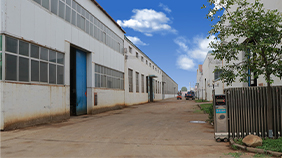
-
 Afrikaans
Afrikaans -
 Albanian
Albanian -
 Amharic
Amharic -
 Arabic
Arabic -
 Armenian
Armenian -
 Azerbaijani
Azerbaijani -
 Basque
Basque -
 Belarusian
Belarusian -
 Bengali
Bengali -
 Bosnian
Bosnian -
 Bulgarian
Bulgarian -
 Catalan
Catalan -
 Cebuano
Cebuano -
 Corsican
Corsican -
 Croatian
Croatian -
 Czech
Czech -
 Danish
Danish -
 Dutch
Dutch -
 English
English -
 Esperanto
Esperanto -
 Estonian
Estonian -
 Finnish
Finnish -
 French
French -
 Frisian
Frisian -
 Galician
Galician -
 Georgian
Georgian -
 German
German -
 Greek
Greek -
 Gujarati
Gujarati -
 Haitian Creole
Haitian Creole -
 hausa
hausa -
 hawaiian
hawaiian -
 Hebrew
Hebrew -
 Hindi
Hindi -
 Miao
Miao -
 Hungarian
Hungarian -
 Icelandic
Icelandic -
 igbo
igbo -
 Indonesian
Indonesian -
 irish
irish -
 Italian
Italian -
 Japanese
Japanese -
 Javanese
Javanese -
 Kannada
Kannada -
 kazakh
kazakh -
 Khmer
Khmer -
 Rwandese
Rwandese -
 Korean
Korean -
 Kurdish
Kurdish -
 Kyrgyz
Kyrgyz -
 Lao
Lao -
 Latin
Latin -
 Latvian
Latvian -
 Lithuanian
Lithuanian -
 Luxembourgish
Luxembourgish -
 Macedonian
Macedonian -
 Malgashi
Malgashi -
 Malay
Malay -
 Malayalam
Malayalam -
 Maltese
Maltese -
 Maori
Maori -
 Marathi
Marathi -
 Mongolian
Mongolian -
 Myanmar
Myanmar -
 Nepali
Nepali -
 Norwegian
Norwegian -
 Norwegian
Norwegian -
 Occitan
Occitan -
 Pashto
Pashto -
 Persian
Persian -
 Polish
Polish -
 Portuguese
Portuguese -
 Punjabi
Punjabi -
 Romanian
Romanian -
 Russian
Russian -
 Samoan
Samoan -
 Scottish Gaelic
Scottish Gaelic -
 Serbian
Serbian -
 Sesotho
Sesotho -
 Shona
Shona -
 Sindhi
Sindhi -
 Sinhala
Sinhala -
 Slovak
Slovak -
 Slovenian
Slovenian -
 Somali
Somali -
 Spanish
Spanish -
 Sundanese
Sundanese -
 Swahili
Swahili -
 Swedish
Swedish -
 Tagalog
Tagalog -
 Tajik
Tajik -
 Tamil
Tamil -
 Tatar
Tatar -
 Telugu
Telugu -
 Thai
Thai -
 Turkish
Turkish -
 Turkmen
Turkmen -
 Ukrainian
Ukrainian -
 Urdu
Urdu -
 Uighur
Uighur -
 Uzbek
Uzbek -
 Vietnamese
Vietnamese -
 Welsh
Welsh -
 Bantu
Bantu -
 Yiddish
Yiddish -
 Yoruba
Yoruba -
 Zulu
Zulu
thread rolling machine video
Understanding Thread Rolling Machines A Comprehensive Overview
Thread rolling machines play a pivotal role in the manufacturing sector, primarily in the production of screws, bolts, and various fasteners. These machines utilize a unique process known as thread rolling, where thread shapes are formed in a workpiece through the application of pressure. This method is favored over traditional cutting techniques due to its numerous benefits, including improved material properties, reduced waste, and enhanced efficiency.
The process begins with a cylindrical workpiece made from a variety of materials, including steel, aluminum, or brass. Unlike cutting, where materials are removed to create threads, thread rolling involves deforming the material. The workpiece is placed between two rollers, which have a pattern corresponding to the desired thread shape. As the rollers turn, they exert pressure on the workpiece, causing the material to flow and conform to the shape of the rollers. This generates threads that can withstand higher loads and stresses, making them suitable for critical applications.
Understanding Thread Rolling Machines A Comprehensive Overview
Moreover, thread rolling is highly efficient. The process typically requires less time and fewer resources than traditional machining methods. Because material is not removed, there is minimal waste, contributing to a more sustainable manufacturing process. Additionally, thread rolling machines can operate at high speeds, significantly increasing production rates. This efficiency is further supported by advancements in technology, with many modern machines being equipped with automation features that optimize productivity and precision.
thread rolling machine video

In recent years, there has been a growing interest in video content that showcases the capabilities and workings of thread rolling machines. Such videos not only serve as educational tools for those in the manufacturing industry but also promote the innovative technology behind these machines to a broader audience. By visually demonstrating the thread rolling process, these videos highlight the intricacies of machine operations and the quality of the products produced.
One common theme in these videos is the emphasis on maintenance and setup. Proper setup is crucial for achieving the desired thread dimensions and ensuring the longevity of the machinery. Operators are often trained to adjust the rollers accurately, monitor the machine during operation, and conduct regular maintenance checks to prevent downtime and enhance production efficiency.
In addition to technical aspects, these videos often discuss innovative applications of thread rolling in various industries. For instance, manufacturers are increasingly exploring the use of thread rolling for producing specialized fasteners designed for unique applications, such as high-heat environments or corrosive settings.
In conclusion, thread rolling machines are integral to modern manufacturing, providing a reliable and efficient means of producing high-quality threaded fasteners. As advancements in technology continue to drive the industry forward, the visualization of these processes through video content will further enhance understanding and appreciation for the precision engineering behind thread rolling. Whether for educational purposes or industry promotion, such videos play a significant role in illuminating the sophisticated world of manufacturing.
